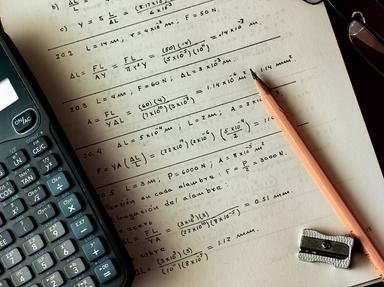Quiz Answer Key and Fun Facts
1. 0, 1, 3, 6, 10, 15, x
2. 1, 4, 27, 256, x
3. 1, 1, 2, 3, 5, 8, 13, 21, x
4. 1, 2, 4, 8, 16, 32, 64, 128, x
5. 1, 4, 6, 9, 11, 14, 16, 19, x
6. 3, 1, 2, 0, 1, -1, x
7. 1, 3, 5, 7, x
8. 1, 8, 27, 64, 125, 216, x
9. -1, 0, 3, 8, 15, 24, 35, 48, 63, 80, x
10. 1, -1, 2, 0, 3, x
11. 7, 14, 21, 28, 35, x
12. 1, 2, 4, 7, 11, 16, 22, x
13. 1, 8, 5, 12, 9, 16, 13, 20, x
14. 1, 2, 5, 14, 41, x
15. 1, 2, 3, 4, 5, 6, 7, x
Source: Author
achernar
This quiz was reviewed by FunTrivia editor
crisw before going online.
Any errors found in FunTrivia content are routinely corrected through our feedback system.


